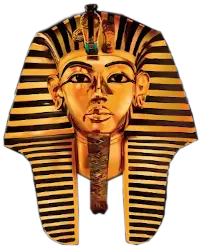
absurdum. Parmenides introduced no new teaching when he spoke of Being (To on) as that which exists; and Non-Being (To me on) as that which does not exist. He only reemphasized the doctrine of opposites as a principle of nature: a doctrine taught not only by the Pythagoreans, but also the Athenian philosophers, chiefly Socrates. But the doctrine of opposites owes its origin to the Egyptian Mysteries which take us back to 4000 B.C. when it was demonstrated not only by double pillars in front of temples, but also by the pairs of Gods in the Mystery System, representing male and female, positive and negative principles of nature. It is also clear that the Eleatic Philosophers drew their teachings from Egyptian sources.
(Plato Phaedo; Memphite Theology: Intellectual Adventure of Primitive Man by Frankfort p. 55; 66-67; 51-60. Plutarch: Isis et Osiris, p. 364C; 355A; 371B; 868, Ancient Egypt: John Kendrick vol. I p. 339).
III. The later Ionic philosophers have been given credit for the following doctrines:
(1) Heraclitus, (a) that the world was produced by fire through a process of transmutation, and (b) since all things originate from fire, then Fire is the Logos: The Creator.
(2) Anaxagoras (a) the Nous or mind is the source of motion or life in the universe and that sensation is produced by the stimulation of opposites.
(3) Democritus (a) that atoms under-lie all material things, and (b) that the phenomena of life and death are merely changes in the mixture of the atoms, so that the atoms never die, because they are immortal.
These doctrines were by no means produced by the late Ionic philosophers, but could be shown to have originated from the Egyptian Mystery System. The Egyptians were fire worshippers, because they believed that fire was the creator of the universe, and built their great pyramids (pyr = fire) in order to worship the God of Fire, and the pyramid age
Topics
Greek Philospohy is Stolen Egyptian Philosophy
The Memphite Theology is the Basis of all Important Doctrines of Greek Philosophy
Greek Philosophy was Alien to the Greeks
Greek Philosophy was the offspring of the Egyptian Mystery System
The Egyptians Educated the Greeks
The Curriculum of the Egyptian Mystery System
The Pre-Socratic Philosophers and the teaching Ascribed to them
The Athenian Philosophers
1. Socrates
2. Plato
3. Aristotle